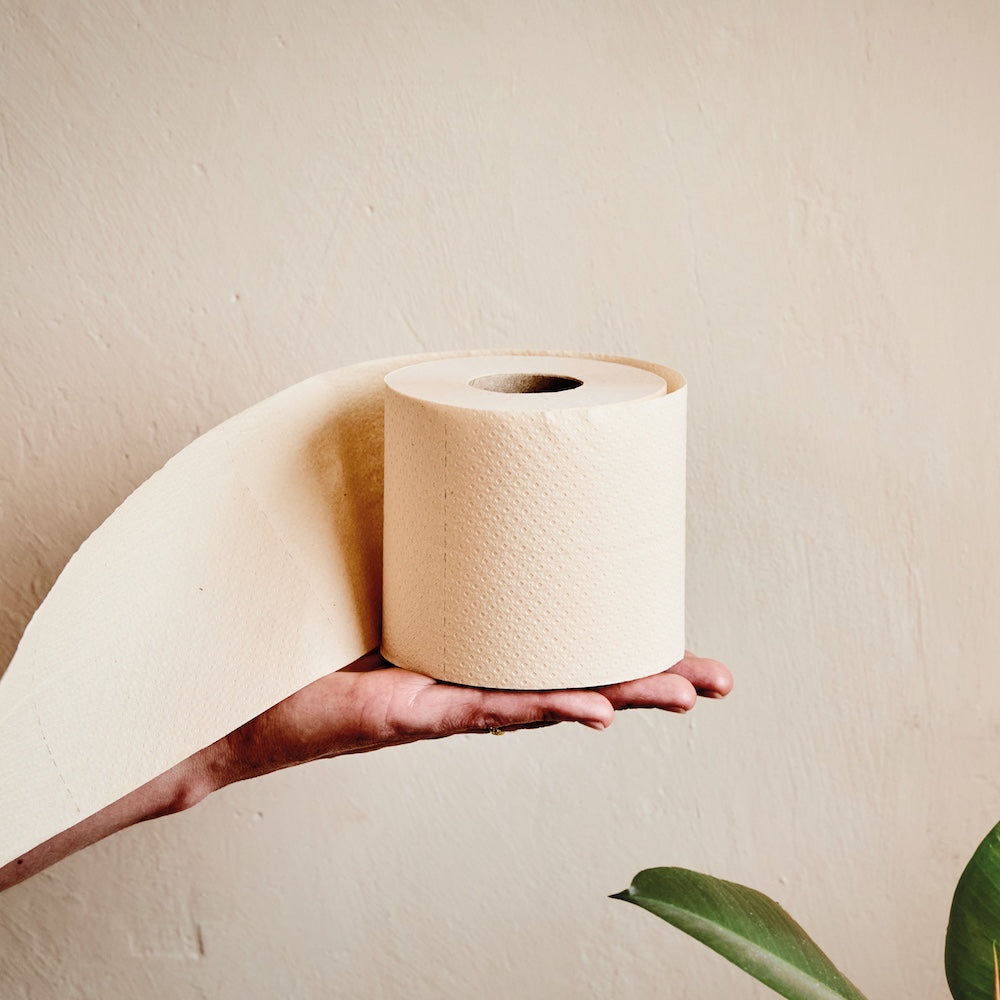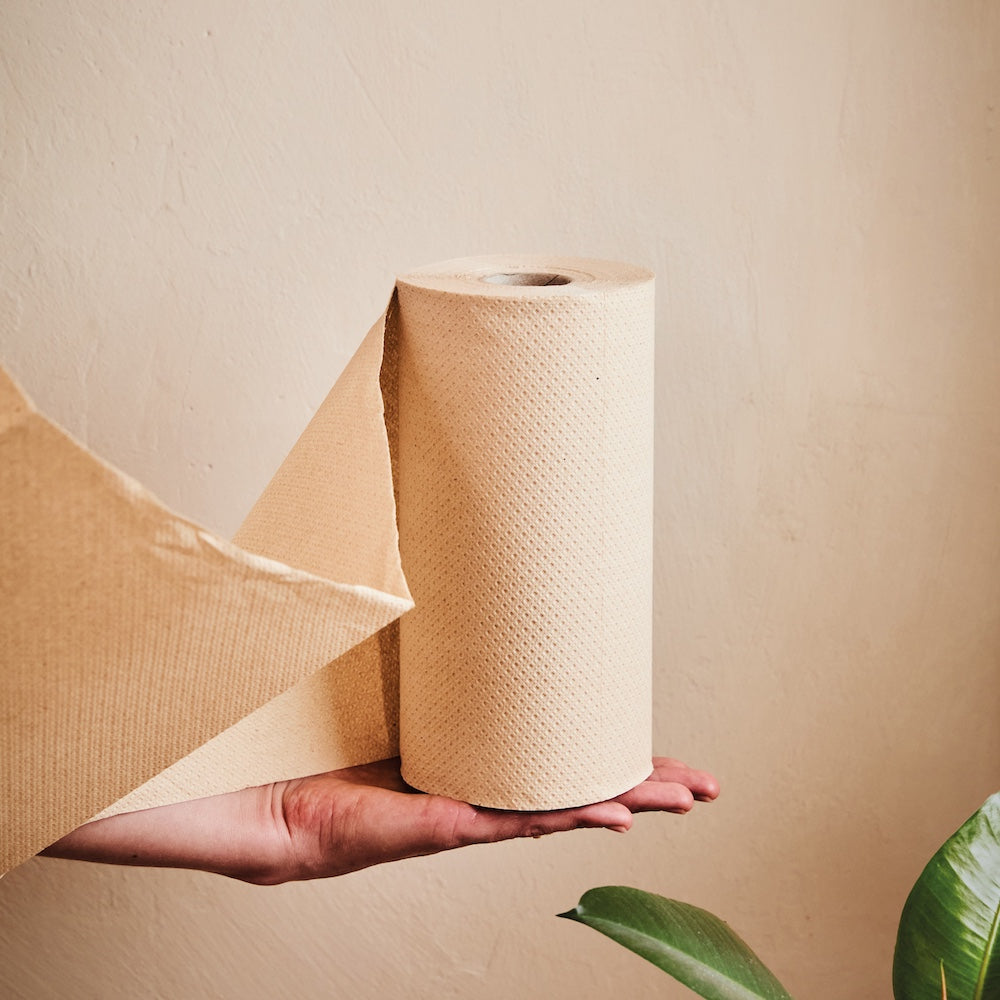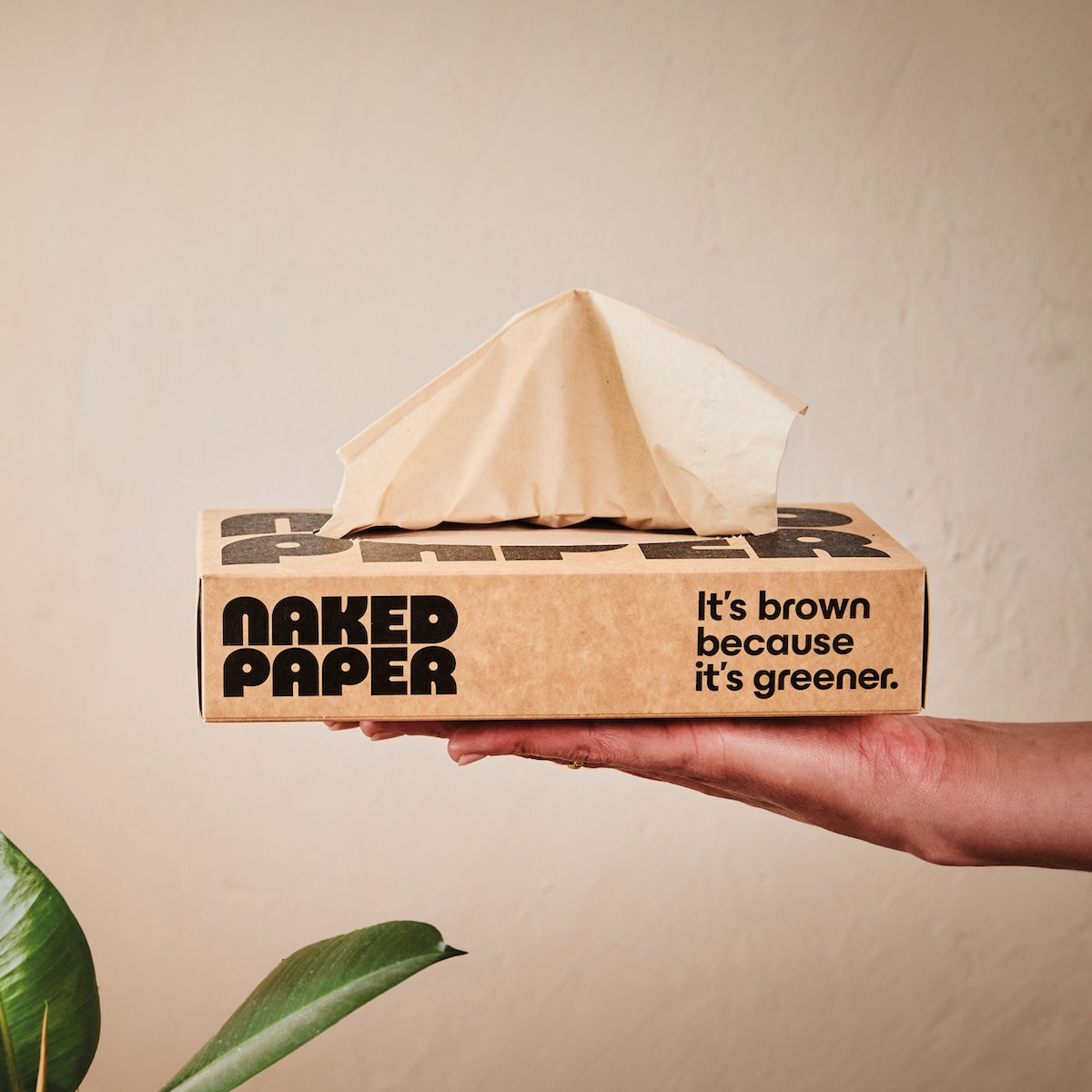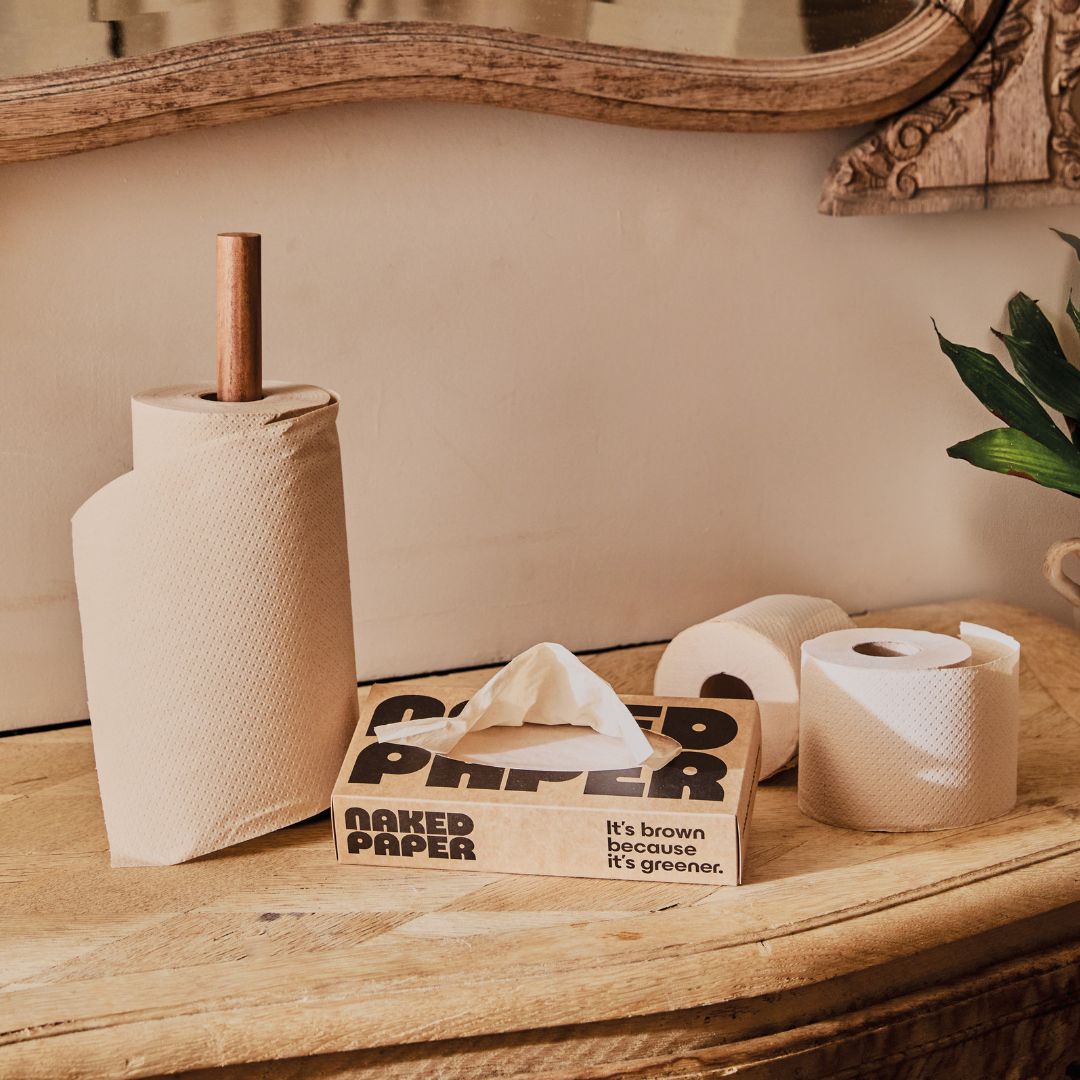Managing heat at our factory

Toilet paper has been around in some form or another for hundreds of years. The process has been refined over time; from the simple sheets first produced in ancient China to the bleach-free eco toilet paper we make at Naked Paper.
But the basic recipe hasn’t changed. To make toilet paper you need a raw material, like bamboo or recycled cardboard. You need water to turn the raw material into a pulp. And you need heat, to dry the rolls.
So heat is an essential part of our manufacturing, but what about the ambient heat we can’t control? As the summer sun shines and the temperature rises, how does a toilet paper factory deal with hotter days?
Heat in the factory
We make Naked Paper at our brilliant family-run B Corp factory in Spain. The Catalonia region where our factory is based is known as a hub of sustainable manufacture, and it’s also known for more than 300 days of sunshine per year. The hottest months are July and August, when daily average temperatures are around 30°C.
Air conditioning might provide a solution in some workplaces, but it doesn’t work for our factory.Heating and cooling huge industrial buildings isn’t energy-efficient and it wouldn’t line up with our commitment to sustainability.
That means our factory team has to work with the weather, not against it.
As temperatures rise, some materials and machines start behaving differently. Metals expand slightly in the heat, which can affect the calibration of sensitive machinery. Electronics and control panels also don’t love high temperatures, so we keep an extra close eye on those during the warmer months to avoid interruptions or malfunctions.
It means there’s more to keep an eye on for our quality control and production checks, but we do have a few factors working in our favour…

Keeping it simple
When it comes to keeping the quality of Naked Paper consistent whatever the weather, it helps that we keep things simple.
We take sustainable materials (like locally-sourced cardboard boxes or FSC-certified bamboo), clean them with gentle soaps, and mix them with water to create pulp. That pulp gets spread into thin sheets, dried using hot air from our biofuel-powered furnaces, and rolled into the best value eco toilet paper around.
No bleach. No artificial fragrances. No harsh chemicals.
The fewer synthetic ingredients in the mix, the fewer problems we face when the weather turns up the heat. Most of our materials don’t mind a warm day; they’re natural, flexible, and fairly low-maintenance.
There’s one exception, though…

The sticky bit
To make a 2-ply toilet roll, you need something to hold the thin layers of tissue together. At Naked Paper we use a plant-based adhesive made from pine resin. It’s ultra-thin and applied sparingly; just enough to bind the layers securely without affecting softness.
But like many natural materials, our glue is temperature-sensitive.
In higher heat, the adhesive becomes runnier. In cooler temperatures, it thickens up.
If the glue goes on too thick, your loo roll can feel a bit stiff. If it’s too thin, the plies may not hold together properly. So we have a balancing act on our hands.
That’s why our team regularly adjusts the nozzles that apply the adhesive, making minor corrections to the amount applied as the day heats up or cools down. Monitoring and recalibrating in real time helps our rolls stay sustainably soft.

A word on water
Toilet paper production relies heavily on water. It’s the key ingredient that turns recycled cardboard, or dried bamboo fibres, into the smooth, soft pulp we shape into rolls.
Paper and tissue mills are generally built on rivers for this reason, and ours is no exception. The factory where we make Naked Paper was built on the banks of the beautiful river Fluvia in 1881. And because we avoid bleach and harsh chemicals, we can borrow water from it without harming the local ecosystem.
Here’s how it works:
💧We draw water from the river.
⚙️We use it to mix and process the pulp.
🔁Then, after it evaporates in the drying phase, we collect, filter, and test it before returning it to the river; clean and safe.
The water of the Fluvia is checked every three months to ensure there hasn’t been any change in key environmental markers. In other words, we’re borrowing clean water, using it for about 5-8 cycles of toilet paper manufacture, and putting it back just as clean.
So the cleanliness of the water stays constant, but of course the temperature doesn’t! In warmer months, the river water is warmer too, which affects how quickly our raw materials absorb it, and how much we should mix it.
Too much mixing? You weaken the fibres. Too little? You get inconsistencies in texture and softness.
So again, it’s all about balance. Our team uses experience and a careful eye (and nose and touch) to get the pulp just right.
We never artificially heat or chill the water. It wouldn’t be efficient, and it wouldn’t align with our low-impact commitments. Instead, we adapt the process to fit the water’s natural state. Our environment gives us a variable; we work with it.

A boost from the sun
Not all heat-related changes are tricky, some are a blessing. 300 days of sunshine can pose a problem for our glue, our water, and our machines, but our solar panels love every minute of it.
Our factory runs on 100% renewable electricity all year round, rain or shine. But in summer, when the sun’s out for longer and the skies are clearer, we can rely more heavily on our on-site solar power system made up of over 8,000 panels.
In fact, we’re such dedicated sun-worshippers that in summer 2025 we’ve added an extra 8000 solar panels to our setup.
What about when it’s just too hot?
Of course the most important part of our process isn’t the glue, or the water, or even the energy we use. It’s the people who make Naked Paper. Like many workplaces in Spain, our factory works on reduced hours in the summer, giving our fantastic team a well-deserved break and a chance to cool down.
This means we have to be a bit more organised and adaptable in the run up to August, but between our factory and our logistics team, we make sure we’re covered.
Those of us based in the UK still work in our usual patterns from our (much cooler!) remote offices. But we take the opportunity to have the odd medicinal ice cream as well.

Conclusion
If we’re doing our jobs right, you’ll never notice any of these seasonal shifts in your finished box of toilet rolls, kitchen rolls, or tissues. But behind the scenes, there’s a lot of thoughtful tweaking going on to make sure every sheet is as good as the last, and our processes stay sustainable.
Curious about how something else works in our production process? Want to know more about our sustainability measures? Drop us a message; or you can check out the range of posts on our blog covering everything to how we clean our toilet paper without bleach, to why we don’t wrap our eco toilet rolls.
Want to enjoy the coolest tissue products around, whatever the weather?
Recent blog posts
-

Why we say "climate footprint" not "carbon footprint"
Our climate is changing as a result of the way people live, travel, and shop. And while everyone has a role to play in the transition to more sustainable ways of living, the bulk of the responsibility has to lie...
-

Unbleached, uncomplicated, unbelievably aligned
Sometimes things just fit together perfectly. Like a bleach free kitchen roll standing ready on a worktop made from reclaimed timber chippings. Our partnership with GS8 is a lot like that. GS8 are an award-winning developer and contractor of planet-positive...
-

Toilet paper for septic systems
If you’ve got a questions about toilet paper, we’ve got answers. Today we’re digging into a topic that might not occur to 96% of the UK population, but is critical to the other 4%. What is the best toilet paper...







